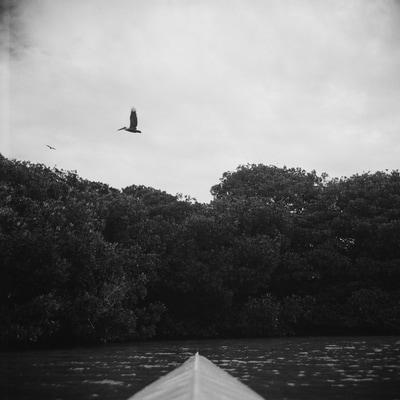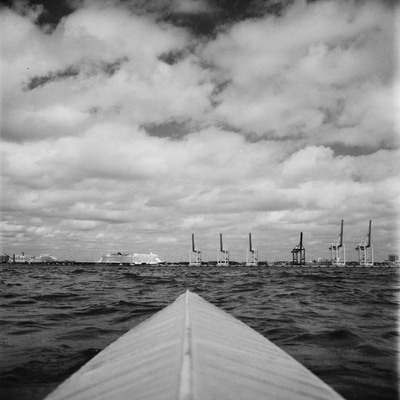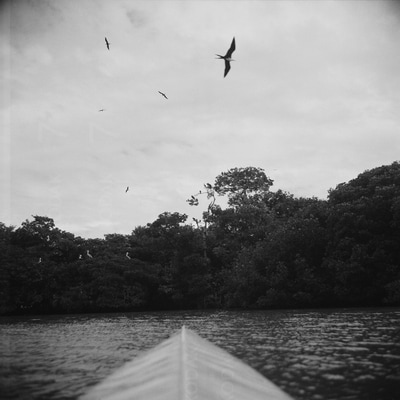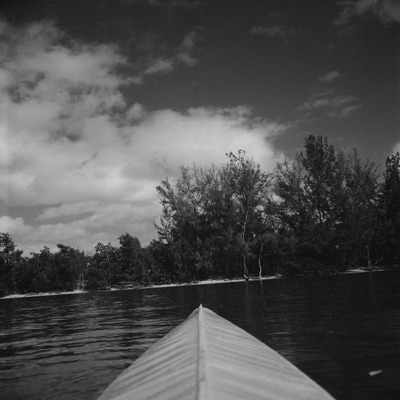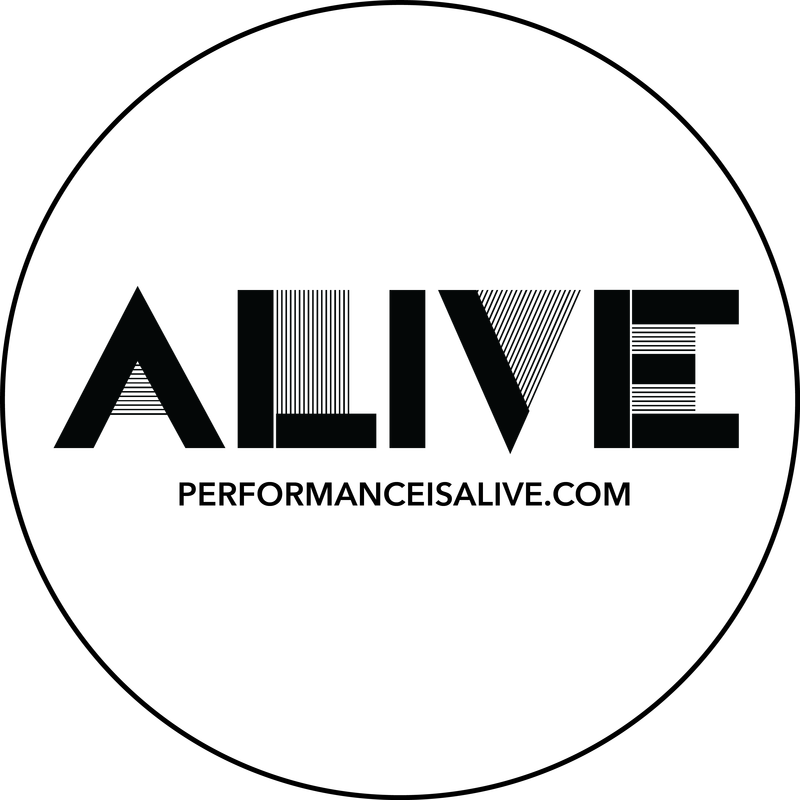|
It is with great pleasure that we jump back into one of the founding components of this site, the Artist Feature! Multi-media artist, Trevor Amery, joined the #AliveAtSatellite programming during Miami Art Week at Satellite Art Show. His performance initiated with the cross-country journey from California (where he is completing his MFA at UC San Diego) to Miami Beach, Florida. In our interview we discuss the importance of community within Amery's practice and he recalls the terrifying capsize experience while performing Baidarka. - Quinn Dukes QUINN DUKES: What inspired you to build this massive kayak? TREVOR AMERY: In 2013 I returned to the U.S. after living in Hungary for a year to attend Skowhegan and I was having a difficult time transitioning back and relocating my art practice. I had just finished a lot of research-based work and was ready to move on to something new, whatever that meant. Sitting in my studio in Maine while rain came down in sheets outside with no clue what I should do next, I remembered some sage advice from a good friend, Alessandra Torres. It was more of question really, and a simple one at that, “if you could make anything in the world, what would that be?” As I was stewing over this I realized I had always wanted to build a kayak. Not necessarily as art. It was just something I wanted to do. so I listened to this impulse, read everything I could on the history of kayaks, found some free plans online, walked into the woods to cut and collect branches for the ribs, and began the construction of my Baidarka kayak. I did not know how it would enter into my art practice at the time. I just knew I had to trust my gut and allow the process of making it to inform what and how it needed to be. QD: Did you always envision performing/kayaking with the object? TA: Actually, I did not. Upon completion of the kayak in 2015 I was galvanized in the belief that it would never touch water… that it existed as an object of embodied knowledge and not simply as a tool for recreation and exploring (which I held true to for a year and a half!). During this time I worked on a series of exhibitions that focused more on the ontology of the kayak and my relationship to its coming into being and it as a thing. It was not until the spring of 2016 that I started thinking about the kayak as an object for performance. QD: Can you discuss your journey from California to Miami, FL? Did you have experience traveling with the kayak already? How long was the journey? Any obstacles? TA: Driving from San Diego to Miami is an incredible experience filled with cartoon cacti, a lot of white f-150 pickups, bayous, and bad food (due to my ridiculous timeline barring any food-driven detours). I made it East in four days, spent three days in Miami, and floored it back in another three… through this I learned that hallucinations happen about hour 19 or 20, depending on caffeine and hydration. I should mention here that I am no stranger to the road and hauling my 17’2” Baidarka. This past summer I drove it to Homer, Alaska for its inaugural launch and spent a month and half living on the road to realize the project. For that I retrofitted my truck with a queen-size mattress, camper shell, spare gas cans, and enough fuel to make plenty of pour-over coffees along the way. Needless to say, I was well prepared for most obstacles that may come my way. QD: Why did you want to document Miami’s waterline? Were you expecting to find anything in particular? TA: I have spent a bit of time in Miami over the years and have always found the relationship of the city to the water intriguing for myriad reasons. The schism between Miami’s economic dependence on water-recreation, beach culture, cruise lines, etc. and the threat the melting of the ice caps and rising water line poses to the city is just one example. I began thinking of these coastlines as interesting sites of ephemerality and entropy and wanted to use the kayak, my cell phone, and my Mamiya camera as a means to document these spaces. I did not know what I would find or have any expectations. The project really was a means of documentation, for creating a typology, and to get to know a place on a whole new level at a speed that motorized transport rarely allows for. QD: What were you thinking about on your 2-day performance journey? TA: To be honest, I was in a constant state of awe. Miami’s coastlines are beautiful and serene spaces full of incredible wildlife, jurassic soundscapes, and the occasional deserted plastic chair. There are such a range of experiences to be had depending on where one launches from, a 2-day performance journey could easily become a 30-day journey… if one had the time and opportunity. But personally, I was obsessed with the cacophony of birds that emanated from specific islands and the way the scale of the city and different architectures transformed when in a small boat on the water. I also thought a bit about survival and death, but we’ll get to that in a bit. QD: How did it feel to perform a sort of “invisible” performance? TA: It was wonderful. I cherished the opportunity to be able to participate in the Performance Is Alive lineup alongside such amazing artists, but also to perform in such a serene environment away from the chaos that are the fairs. A lot of my artwork is about cultivating a presence or vulnerability either for myself or for a viewer, and so engaging in a performance that is subsumed into the water recreation and culture of Miami would have felt false if it made itself explicit as artwork. This subsumption is not a new idea, but one that resonates with me. The performance existed for those two days in Miami, on social media posts I made from the water, and will continue on through the photo documentation I took, a book I am currently working on about the Baidarka, and as part of the kayaks embedded history as a thing. QD: Okay… we have to talk about the flip! What happened? TA: First and foremost, I am an idiot. Or put more kindly, I can be a bit foolhardy. And it is with that preface I’ll begin explaining the flip, or more accurately the capsize. My hopes that day were to finish the performance by documenting the coastline of Miami Beach from the Atlantic Ocean and then romantically surfing the ocean waves ashore as I did in Alaska. It all seemed so nice in my head. I launched from Hobie Beach in the morning and from there circled underneath the bridges into the bay to explore an abandoned brutalist-style concrete amphitheater. I continued on exploring some small birds-nest islands, the industrial loading docks, and then cut around Fishers Island into the ocean where I needed to cross Government Cut and the South Beach jetty before making it to Miami Beach. After about three and a half hours I made my way out to open waters where the waves swelled in size. At this point I began to question the journey and my safety a little bit but still felt comfortable in these conditions. The waves did not make me have to paddle harder or strain myself; I was more gently climbing and descending hills of water with ease. As I made it to Government Cut the waves became more turbulent, taller, and narrower in breadth. Before I knew it a wave came from behind me, backfilled my kayak, and flipped me over. Time stopped. I was upside down. I could feel the water pouring into the kayak and running along my legs in an instant. I attempted to Eskimo Roll the kayak but was unable to in the washing machine-like current. I could see nothing but dark emerald. I pulled my body from the hull, swam what felt like up, and found air. I looked around and saw one bright orange dry-case floating away with my phone, ID, and credit card in it. As the current ripped each and every direction I weighed my options and finally leapt toward the case and was able to retrieve it in a few strokes and then returned to the hull. I wrapped my arms around the filled kayak and jammed the dry-case, along with everything else, hard and up into the bow of the boat, plugging it with a foam pad I had used to line the base of the kayak. The land felt a million miles away at this instant. I spotted a sleek new yacht not too far and tried to signal to them. The garish and impenetrable black glass of the boat was as indifferent to my situation as the water I was treading. I yelled a few time, threw my hand as high as I could, and waved it furiously back and forth, yet the yacht did not slow a knot. It cruised on by completely unaware of my existence. The kayak rolled a bit in the water and I began to fear the possibility of it sinking. Everything felt so far, the jetty, the condos on the coastline of Fishers Island, and the sailboats out in the ocean. I was completely alone. As the next wave heaved me upward toward the sky I looked toward Government Cut and saw a jet-skier heading my direction. Again I threw my hand as high above my head as I could to try and flag him down. For a moment it looked like he didn’t see me and I felt defeated. After a few more seconds (what felt like years) passed he came towards me. He pulled up and seemed to be in shock at the sight of me but eventually took action and threw me a tow-line with a carabiner tied to the end of it. After a minute of struggling with the line I was able to rotate the kayak so the cockpit opening faced the sky and clipped the carabiner to one of the ribs on the bottom of the kayak. After a few starts, stops, and readjustments, Marvin, the jet-ski operator towed me in. When I was sitting on the back of his jet ski with adrenaline coursing through my body I could not stop thinking about the surface of the water and that inky, leaden viscosity. Though I was safe at that moment and straining to hold the bow of the kayak with my leg and arm, my mind was still in the water, my eyes fixed along that unforgiving plane that shifted its weight with herculean force. I was in complete shock and it definitely took a few days to comprehend the magnitude of what happened. And because I am a maker and not a writer, either take my word for it or check out some of my work since then. That is the capsize, or what I like to think of as the closest I need to come to channeling the spirit of Bas Jan Ader or Donald Crowhurst. QD: How does this project continue? Is there another phase? TA: The project has definitely developed a bit of a life force and will continue through different iterations and outcomes. Since Miami, it inspired a large series of sculptures made of various materials as well as a book that will tie together the inception of the kayak, it's history, my relationship to it as a thing, and the experiences it has prompted. As my research continues and my work brings me to different places, or I bring it, I will deploy the kayak as a means to engage different politics of or relationships to water, recreation, presence, and time. That’s my long-winded way of saying stay-tuned. QD: I love hearing about who artists are inspired by… can you name a few artists that inspire your practice? TA: hmmm... It would be easy to list names of famous/blue chip/successful artists that have undoubtedly shaped my making… but I think the more personal relationships or studio visits I have had with friends or artists at residencies and grad school had a much bigger impact on me. Whether it was Byron Kim telling me to “make with my feet,” Amy Adler encouraging me to stop trying to reinvent the wheel with each project, Sheila Pepe not-so-subtly nudging me to trust my impulses, or simply having a late night beer in the studio with a dear friend, nothing is more inspiring than being surrounded by incredible people whose spirit, curiosity, and humility are infectious. So my sappy answer would be my art family. Yup, I’ll go there. QD: What is next for you? TA: Hopefully a good strong black cup of coffee in the morning and fish taco for lunch. TREVOR AMERY |
CONTRIBUTORSIan Deleón Archives
July 2023
|
|
MISSION // Based in Brooklyn, NYC, PERFORMANCE IS ALIVE is an online platform featuring the work and words of current performance art practitioners. Through interviews, reviews, artists features, sponsorship and curatorial projects, we aim to support the performance community while offering an access point to the performance curious.
Performance Is Alive is a fiscally sponsored project of Fractured Atlas, a 501(c)(3) charity. Contributions made payable to Fractured Atlas for the purposes of Performance Is Alive are tax-deductible to the extent permitted by law. |

